
Orcheton (anciently Orcharton, etc.) is an historic estate in the parish of Modbury in Devon. The present house, known as Great Orcheton Farm is situated 1+1⁄2 miles south-west of Modbury Church.

Orcheton (anciently Orcharton, etc.) is an historic estate in the parish of Modbury in Devon. The present house, known as Great Orcheton Farm is situated 1+1⁄2 miles south-west of Modbury Church.
The Domesday Book of 1086 lists ORCARTONE as the 65th of the 79 Devonshire holdings [1] of Robert, Count of Mortain, uterine half-brother of King William the Conqueror. Robert's tenant was Reginald de Vautort (died post 1121), 1st feudal barony of Trematon [2] in Cornwall, one of his major followers, who held from Robert numerous manors in Devon and Cornwall, including the manor of Modbury. [3] Reginald de Vautort's principal seat was Trematon Castle in Cornwall, also held from Robert, Count of Mortain, which became the caput of the feudal barony of Trematon. Orcheton and Modbury thus descended as possessions of the Honour of Trematon. [4]
The de Orcharton family took its surname from its seat, as was usual. The last holder was John de Orcharton, whose daughter and heiress was Isabella de Orcharton (died 1249), first wife of Geoffry Pridyas, as younger son of Richard Predieux (died 1250) [5] of Prideaux Castle, near Fowey, in Cornwall.


The Book of Fees (c.1302, contents earlier) lists Geoffrey de Pridias as holding Orcherdton, as a member of the manor of Modbury, from the Honour of Trematon. [7] The Prideaux family is believed to be of Norman origin and to have first settled in England at some time after the Norman Conquest of 1066 at Prideaux Castle, near Fowey, in Cornwall. It abandoned that seat and moved to Devon, where it spread out in various branches, earliest at Orcheton. Later branches were seated at Adeston, Holbeton; Thuborough, Sutcombe; Soldon, Holsworthy; Netherton, Farway (see Prideaux baronets); Ashburton; Nutwell, Woodbury and Ford Abbey, Thorncombe and at Prideaux Place in the parish of Padstow, Cornwall, where the Prideaux-Brune family still resides today. It was one of the most widespread and successful of all the gentry families of Devon, and as remarked upon by Swete (died 1821), exceptionally most of the expansion was performed by younger sons, [8] who by the custom of primogeniture were expected to make their own fortunes.
The son and heir of Geoffry Pridyas by his first wife Isabella de Orcharton (died 1249) was Sir Roger Pridyas (living 1297), Sheriff of Devon in 1271, 1272 and 1273. [9] His elder son and heir by his wife a certain Gilda, was Peter de Pridias (died 1316), who married a certain Clarice. His son and heir was Sir Roger de Pridias (d.pre-1357), a Member of Parliament for Devon in 1331, [10] who married Elizabeth Treverbyn, daughter and co-heiress of Huge de Treverbyn of Treverbyn in the parish of St Austell in Cornwall. His second son was John Prideaux who founded the branch of the family seated at Adeston. His eldest son and heir was Roger de Pridias, who predeceased his father, having married twice. Firstly to a certain Elizabeth, by whom he had children, and secondly to Joan Clifford (daughter of Peter Clifford), who in 1357 claimed Orcheton as her dower as is recorded in the accounts of the Duchy of Cornwall, [11] the overlord of the Honour of Trematon. Roger de Pridias's eldest son and heir was Sir John Prideaux (c. 1347 – 1403), twice a Member of Parliament for Devon in 1383 and 1388, [12] whose much mutilated effigy survives in Modbury Church. He was granted the manor of Columb John by the Earl of Devon. [13] As he died without male children his heir became his younger brother Sir Richard Prideaux (died 1408). [14]
The descent in the Prideaux family continued for a further seven generations until Sir Robert Prideaux (1550-post 1603), knighted in July 1603, [15] sold it to Sir John Hele (c. 1541 – 1608) of Wembury in Devon, a serjeant-at-law, [16] Recorder of Exeter (1592–1605) and a Member of Parliament for Exeter who purchased the manors of Yealmpton and Wembury in Devon [17] and whose effigy survives in Wembury Church.

Modbury is a large village, ecclesiastical parish, civil parish and former manor situated in the South Hams district of the county of Devon in England. Today due to its large size it is generally referred to as a "town" although the parish council has not elected to give itself the status of a town as it could do under s.245(6) of the Local Government Act 1972, so it does not have a town council and cannot have a town mayor. It is also known informally as a "market town", as from at least 1199 the lord of the manor has held the right to hold a regular market. The village is situated on the A379 road, which links it to Plymouth and Kingsbridge. The current parish population is approximately 1,500.

Prideaux Place is a grade I listed Elizabethan country house in the parish of Padstow, Cornwall, England. It has been the home of the Prideaux family for over 400 years. The house was built in 1592 by Sir Nicholas Prideaux (1550–1627), a distinguished lawyer, and was enlarged and modified by successive generations, most notably by his great-great-grandson Edmund Prideaux (1693–1745) and by the latter's grandson Rev. Charles Prideaux-Brune (1760–1833). The present building, containing 81 rooms, combines the traditional E-shape of Elizabethan architecture with the 18th-century exuberance of Horace Walpole’s Strawberry Hill Gothic.

Trerice is an historic manor in the parish of Newlyn East, near Newquay, Cornwall, United Kingdom. The surviving Tudor manor house known as Trerice House is located at Kestle Mill, three miles east of Newquay. The house with its surrounding garden has been owned by the National Trust since 1953 and is open to the public. The house is a Grade I listed building. The two stone lions on the front lawn are separately listed, Grade II. The garden features an orchard with old varieties of fruit trees.
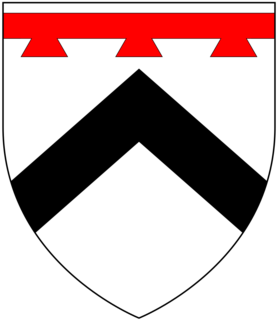
Prideaux is a surname of Cornish origin derived from the place called Prideaux in the parish of Luxulyan. The place-name had the form Pridias in the 12th and 13th centuries; however by folk etymology both the place-name and the surname have been altered to a form based on the French près d'eaux or pré d'eaux.
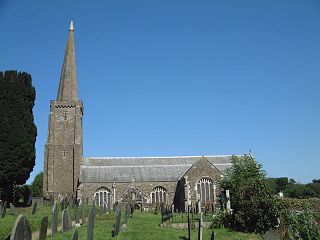
Holbeton is a civil parish and village located 9 miles south east of Plymouth in the South Hams district of Devon, England. At the 2001 census the parish had a population of 579, down from 850 in 1901. By 2011 it had increased to 619.

Heanton Satchville was a historic manor in the parish of Petrockstowe, North Devon, England. With origins in the Domesday manor of Hantone, it was first recorded as belonging to the Yeo family in the mid-14th century and was then owned successively by the Rolle, Walpole and Trefusis families. The mansion house was destroyed by fire in 1795. In 1812 Lord Clinton purchased the manor and mansion of nearby Huish, renamed it Heanton Satchville, and made it his seat. The nearly-forgotten house was featured in the 2005 edition of Rosemary Lauder's "Vanished Houses of North Devon". A farmhouse now occupies the former stable block with a large tractor shed where the house once stood. The political power-base of the Rolle family of Heanton Satchville was the pocket borough seat of Callington in Cornwall, acquired in 1601 when Robert Rolle purchased the manor of Callington.

Nutwell in the parish of Woodbury on the south coast of Devon is a historic manor and the site of a Georgian neo-classical Grade II* listed mansion house known as Nutwell Court. The house is situated on the east bank of the estuary of the River Exe, on low-lying ground nearly contiguous to the water, and almost facing Powderham Castle similarly sited on the west bank. The manor was long held by the powerful Dynham family, which also held adjacent Lympstone, and was according to Risdon the site of their castle until John Dynham, 1st Baron Dynham (1433–1501), the last in the male line, converted it into "a fair and stately dwelling house".

Sir Edmund Prideaux, 1st Baronet (1554–1628), of Netherton in the parish of Farway, Devon, was a Councellor at Law and Double Reader of the Inner Temple and was created a baronet on 17 July 1622. He purchased the estate of Netherton where in 1607 he built a new mansion house, known today as Netherton Hall, a grade II listed building. He was one of John Prince's Worthies of Devon.
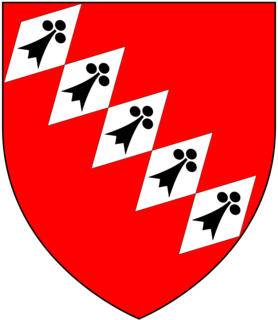
Sir John Hele of Wembury in Devon, serjeant-at-law, was a Member of Parliament for Exeter and was Recorder of Exeter (1592–1605). He was one of Prince's Worthies of Devon (1701). He built at Wembury one of the grandest manor houses ever seen in Devon, called by his near contemporary Risdon : "A magnificent house, equalling, if not exceeding, all other in these western parts, for uniform building; a sightly seat for shew; for receipt spacious; for cost sumptuous; for sight salubrious". It was already a ruin by about 1700, and was finally demolished in 1803. He founded a boys' hospital in Plymouth. His monument and effigy survives in Wembury Church.

The Feudal barony of Trematon was one of the three feudal baronies in Cornwall which existed during the mediaeval era. Its caput was at Trematon Castle, Cornwall. In 1166 it comprised 59 knight's fees, thus about 59 separate manors.
The Feudal barony of Cardinham is one of the three feudal baronies in Cornwall which existed during the medieval era. Its caput was at Cardinham Castle, Cornwall. The Barony was held in recent times by the Vivian family, the last being Nicholas Vivian, 6th Baron Vivian. Brigadier Nicholas Crespigny Laurence Vivian, 6th Baron Vivian, conveyed the title to John Anthony Vincent of Edifici Maxim's, Carrer General, Arsinal, Principat Andora, in 1995. Mr. Vincent was a member of the Manorial Society of Great Britain and died in Douglas, Isle of Man, on 31 March 2018. The Barony was then conveyed after the probate of his estate to an American citizen on 25 May 2019.
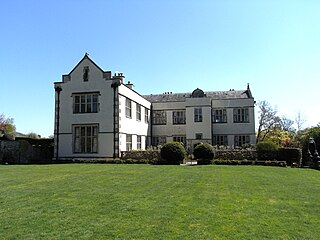
Netherton in the parish of Farway in Devon is an historic estate situated about 3 1/2 miles south-east of Honiton. The present mansion house known as Netherton Hall was built in 1607 in the Jacobean style, restored and rebuilt 1836-44, and is a Grade II listed building.

Soldon in the parish of Holsworthy Hamlets, Devon, England, is a historic estate, a seat of the Prideaux family. The manor house is a grade II listed building dating from the mid-16th century with later alterations. It was sold in 2014 as an eight bedroomed house with an acre and a half of grounds for an asking price of £750,000.
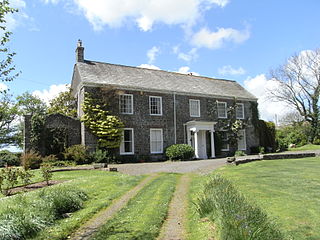
Thuborough in the parish of Sutcombe, Devon, England, is an historic estate, formerly a seat of a branch of the Prideaux family, also seated at Orcharton, Modbury; Adeston, Holbeton; Soldon, Holsworthy; Netherton, Farway; Ashburton; Nutwell, Woodbury; Ford Abbey, Thorncombe, all in Devon and at Prideaux Place, Padstow and Prideaux Castle, Luxulyan, in Cornwall. The present mansion house, comprising "Thuborough House" and "Thuborough Barton", the north-east block, is a grade II listed building.

Columb John in the parish of Broadclyst in Devon, England, is an historic estate and was briefly the seat of the prominent Acland family which later moved to the adjacent estate of Killerton. Nothing of the structure of the Acland mansion house survives except the arch to the gatehouse, dated about 1590, and the private chapel, restored in 1851. The site of the former mansion house is situated one mile due west of Killerton House, and five miles north-east of the historic centre of the City of Exeter. The estate's name derives from it having been held by the Culme family, whose own name was taken from its landholdings in the vicinity of the River Culm, which flows through the Columb John estate.

Lyneham in the parish of Yealmpton in Devon, is an historic estate. The surviving grand mansion house known as Lyneham House is a grade I listed building. It was built c.1699-1703 by Sir Courtenay Croker, MP for Plympton Morice in 1699. A drawing of Lyneham House dated 1716 by Edmund Prideaux (1693–1745) of Prideaux Place, Padstow, Cornwall, survives at Prideaux Place. It shows formal gardens in front with flanking pavilions and an orangery.
Flete in the parish of Holbeton in Devon is an historic manor. In 1810 it was called "one of the finest estates in the county of Devon". The present manor house known as Flete House was built in the 19th century incorporating some elements of an earlier Tudor house on the site.

Sir Thomas Pridias lord of the manor of Newham in the parishes of Kenwyn and Kea, immediately south of the parish of Truro, in Cornwall, was a Member of Parliament for Cornwall in 1298.

South Milton is a village and civil parish in Devon, England, situated on the south coast about 2 miles south-west of Kingsbridge. The civil parish includes the hamlets of Sutton, south of the village, and Upton, north of the village.

Spridleston is an historic manor in the parish of Brixton in Devon, England, long a seat of a branch of the prominent and widespread Fortescue family. The ancient manor house does not survive, but it is believed to have occupied the site of the present Spriddlestone Barton, a small Georgian stuccoed house a few hundred yards from the larger Spriddlestone House, also a Georgian stuccoed house, both centred on the hamlet of Spriddlestone and near Higher Spriddlestone Farm.